
Freight transportation and logistics provider Saia (NASDAQ: SAIA) reported revenue ahead of Wall Streets expectations in Q3 CY2025, but sales were flat year on year at $839.6 million. Its GAAP profit of $3.22 per share was 26.6% above analysts’ consensus estimates.
Is now the time to buy Saia? Find out by accessing our full research report, it’s free for active Edge members.
Saia (SAIA) Q3 CY2025 Highlights:
- Revenue: $839.6 million vs analyst estimates of $831.6 million (flat year on year, 1% beat)
- EPS (GAAP): $3.22 vs analyst estimates of $2.54 (26.6% beat)
- Adjusted EBITDA: $182.6 million vs analyst estimates of $156.6 million (21.8% margin, 16.6% beat)
- Operating Margin: 14.1%, in line with the same quarter last year
- Free Cash Flow was $87.58 million, up from -$10.23 million in the same quarter last year
- Sales Volumes fell 1.5% year on year (9.4% in the same quarter last year)
- Market Capitalization: $7.37 billion
Saia President and CEO, Fritz Holzgrefe, commented on the quarter stating, "I was pleased with our team's ability to focus on what was within our control throughout the quarter. We remain intently focused on the customer, while at the same time maintaining cost management and improving core execution."
Company Overview
Pivoting its business model after realizing there was more success in delivering produce than selling it, Saia (NASDAQ: SAIA) is a provider of freight transportation solutions.
Revenue Growth
A company’s long-term sales performance is one signal of its overall quality. Any business can put up a good quarter or two, but the best consistently grow over the long haul. Over the last five years, Saia grew its sales at an excellent 12.6% compounded annual growth rate. Its growth beat the average industrials company and shows its offerings resonate with customers.
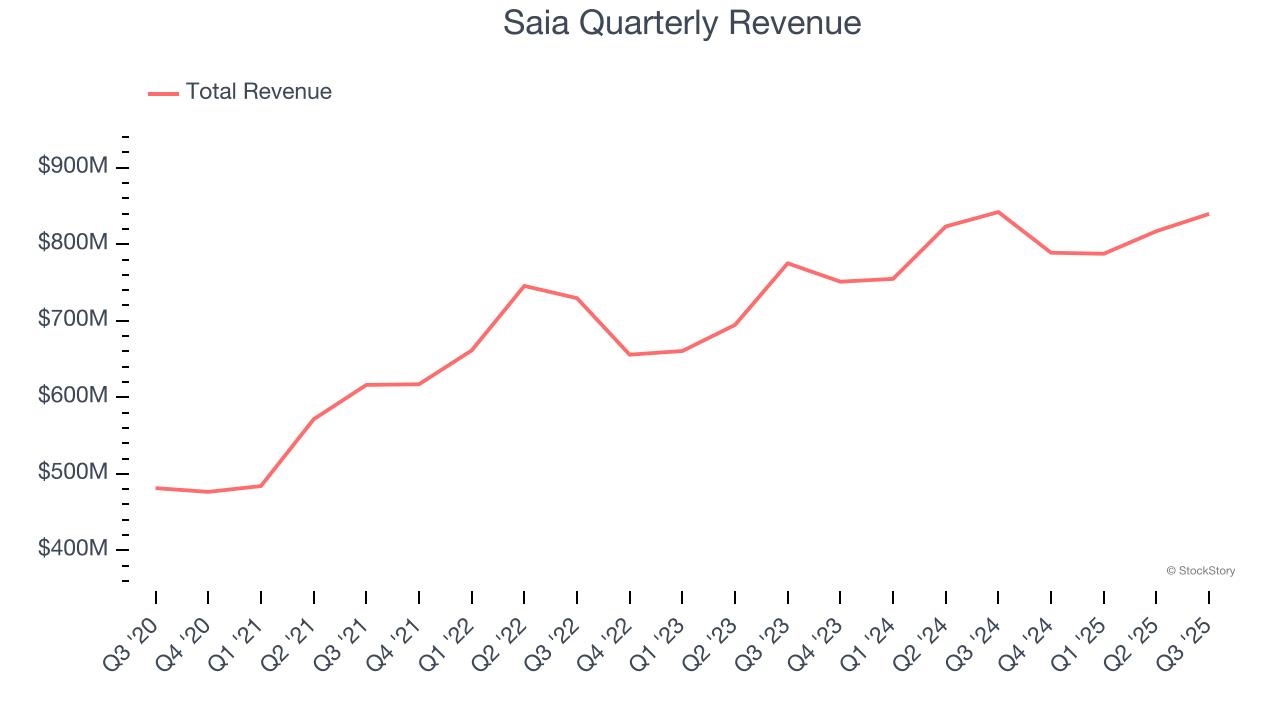
Long-term growth is the most important, but within industrials, a half-decade historical view may miss new industry trends or demand cycles. Saia’s annualized revenue growth of 7.7% over the last two years is below its five-year trend, but we still think the results were respectable. We also think Saia’s recent performance stands out as many other Ground Transportation businesses have faced declining sales because of cyclical headwinds. 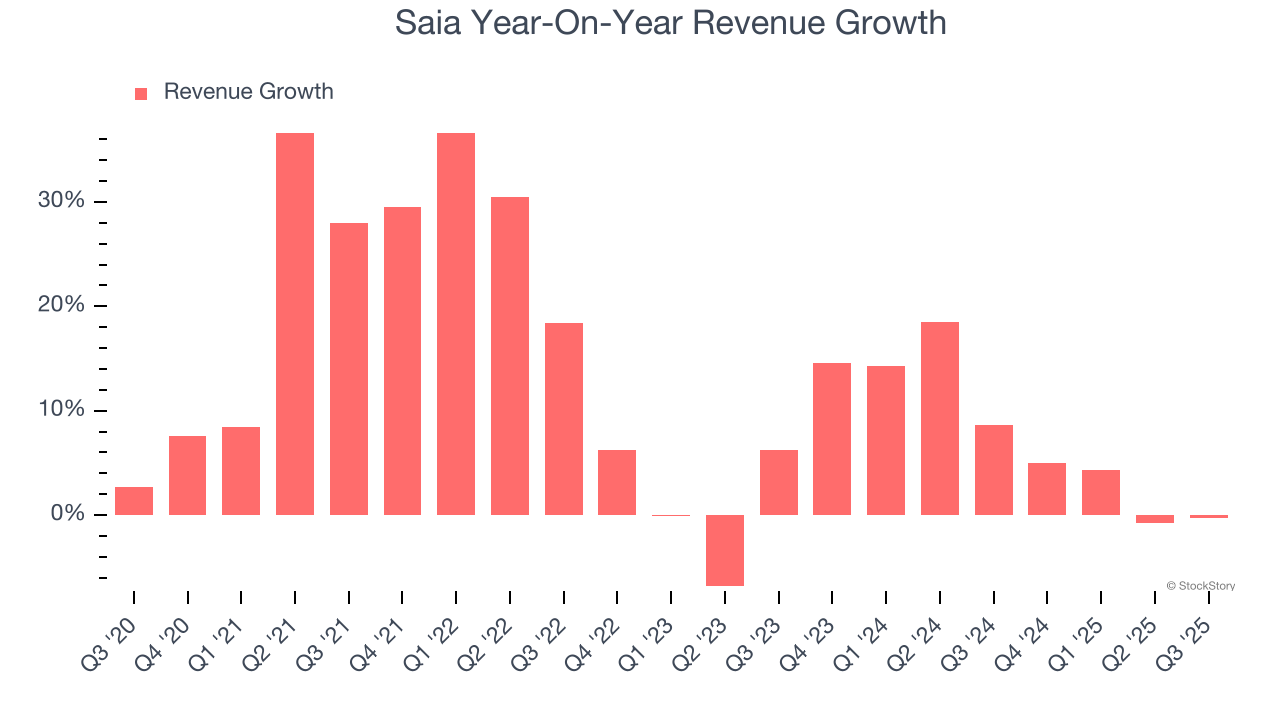
We can better understand the company’s revenue dynamics by analyzing its number of tons shipped, which reached 1.58 million in the latest quarter. Over the last two years, Saia’s tons shipped averaged 6.8% year-on-year growth. Because this number is in line with its revenue growth, we can see the company kept its prices fairly consistent. 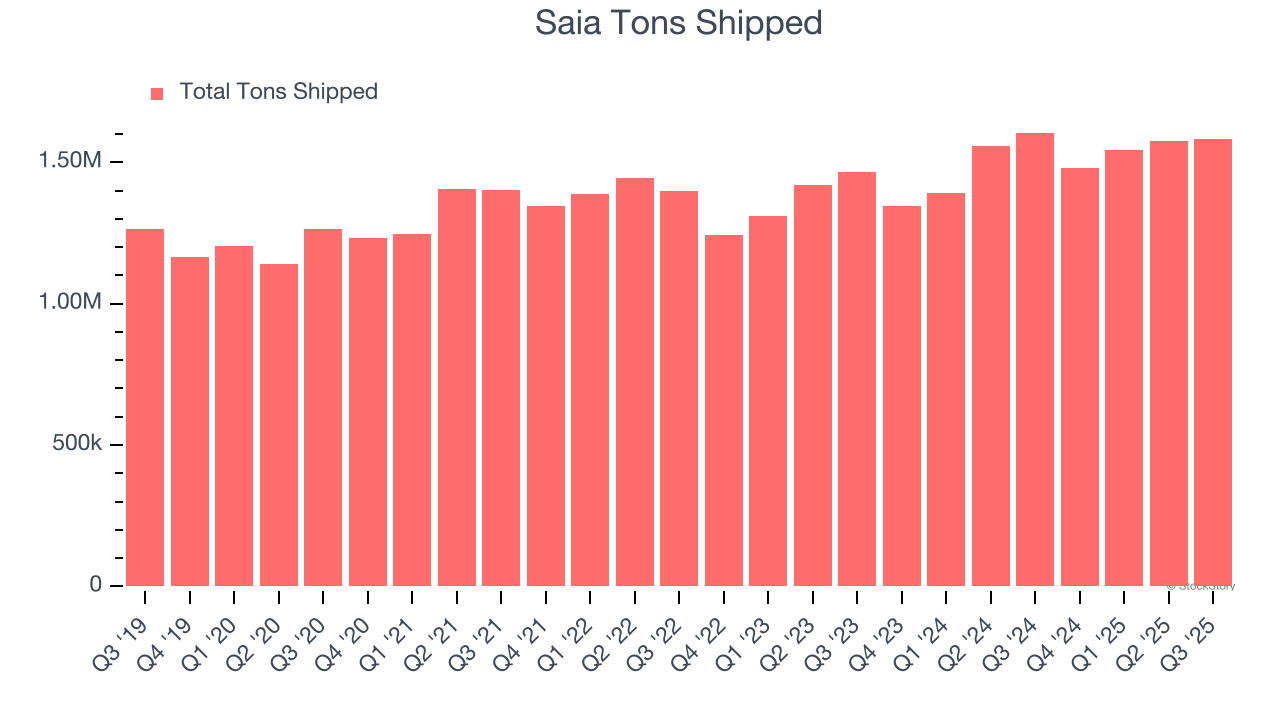
This quarter, Saia’s $839.6 million of revenue was flat year on year but beat Wall Street’s estimates by 1%.
Looking ahead, sell-side analysts expect revenue to grow 4.3% over the next 12 months, a deceleration versus the last two years. This projection is underwhelming and implies its products and services will face some demand challenges.
Software is eating the world and there is virtually no industry left that has been untouched by it. That drives increasing demand for tools helping software developers do their jobs, whether it be monitoring critical cloud infrastructure, integrating audio and video functionality, or ensuring smooth content streaming. Click here to access a free report on our 3 favorite stocks to play this generational megatrend.
Operating Margin
Operating margin is one of the best measures of profitability because it tells us how much money a company takes home after procuring and manufacturing its products, marketing and selling those products, and most importantly, keeping them relevant through research and development.
Saia has been an efficient company over the last five years. It was one of the more profitable businesses in the industrials sector, boasting an average operating margin of 14.8%. This result was particularly impressive because of its low gross margin, which is mostly a factor of what it sells and takes huge shifts to move meaningfully. Companies have more control over their operating margins, and it’s a show of well-managed operations if they’re high when gross margins are low.
Looking at the trend in its profitability, Saia’s operating margin decreased by 1.2 percentage points over the last five years. Many Ground Transportation companies also saw their margins fall (along with revenue, as mentioned above) because the cycle turned in the wrong direction. We hope Saia can emerge from this a stronger company, as the silver lining of a downturn is that market share can be won and efficiencies found.
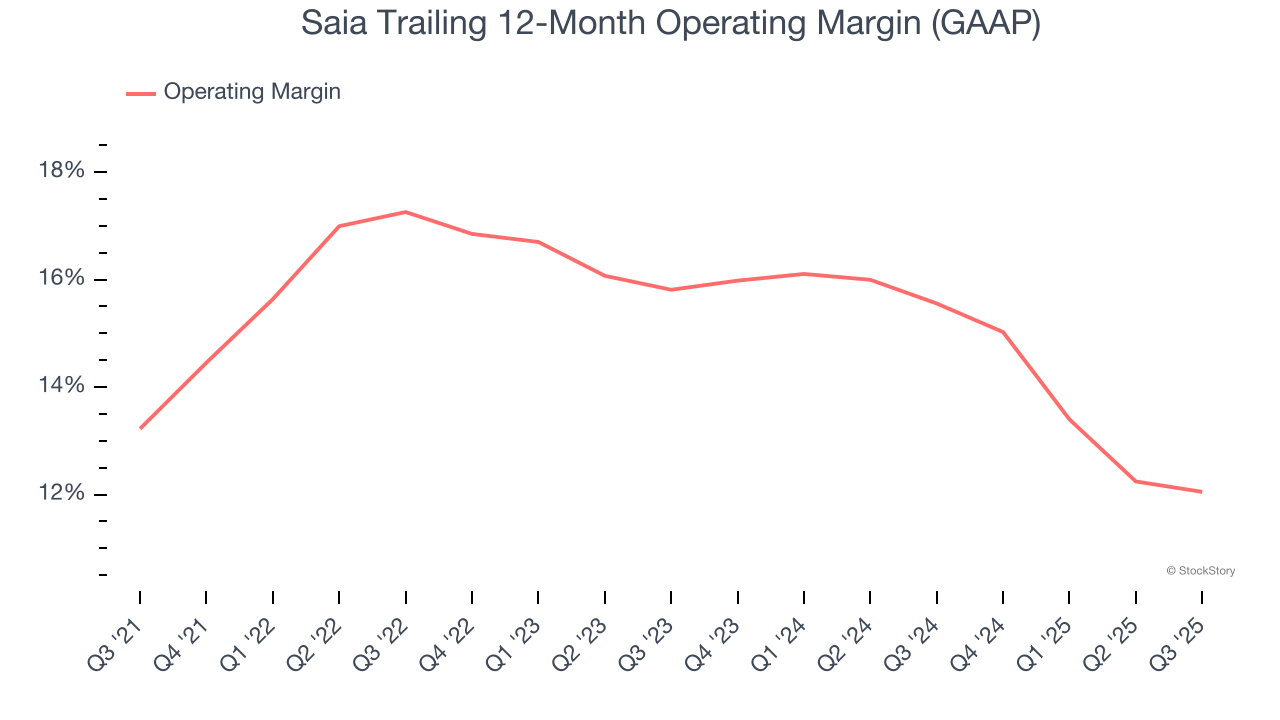
In Q3, Saia generated an operating margin profit margin of 14.1%, in line with the same quarter last year. This indicates the company’s cost structure has recently been stable.
Earnings Per Share
Revenue trends explain a company’s historical growth, but the long-term change in earnings per share (EPS) points to the profitability of that growth – for example, a company could inflate its sales through excessive spending on advertising and promotions.
Saia’s EPS grew at an astounding 18.6% compounded annual growth rate over the last five years, higher than its 12.6% annualized revenue growth. This tells us the company became more profitable on a per-share basis as it expanded.
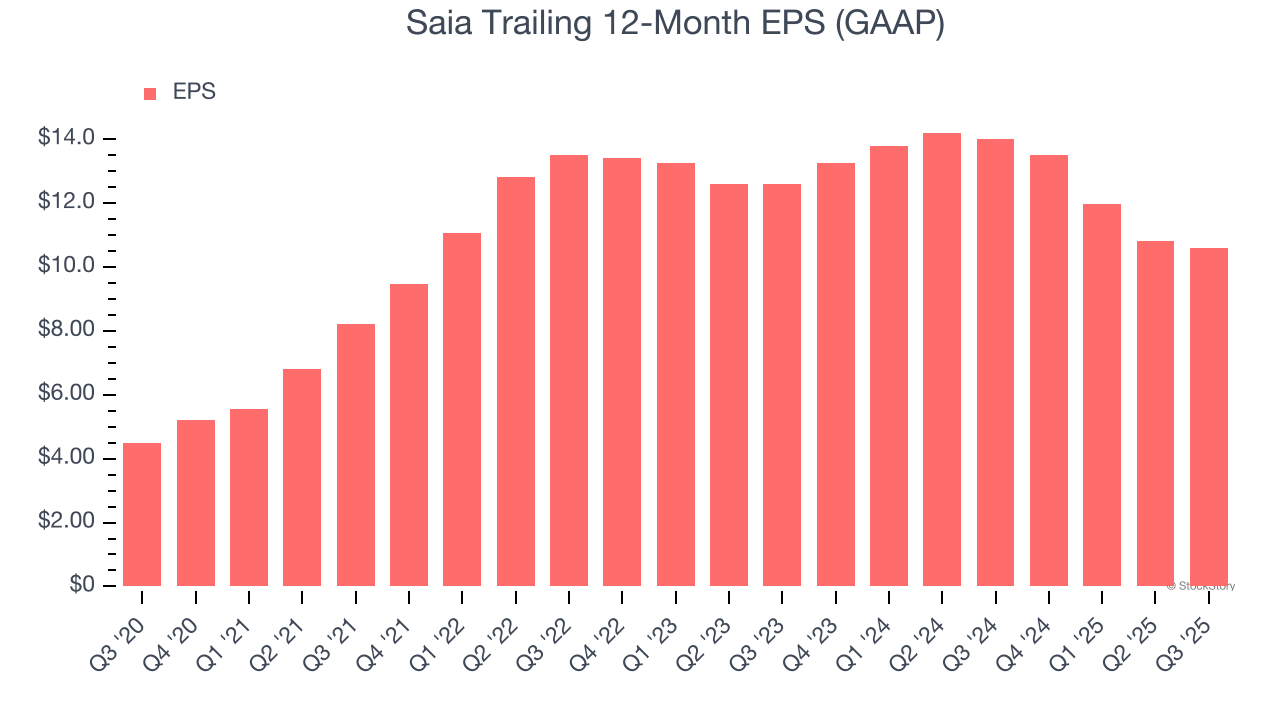
Like with revenue, we analyze EPS over a shorter period to see if we are missing a change in the business.
For Saia, its two-year annual EPS declines of 8.3% mark a reversal from its (seemingly) healthy five-year trend. We hope Saia can return to earnings growth in the future.
In Q3, Saia reported EPS of $3.22, down from $3.46 in the same quarter last year. Despite falling year on year, this print easily cleared analysts’ estimates. Over the next 12 months, Wall Street expects Saia’s full-year EPS of $10.58 to stay about the same.
Key Takeaways from Saia’s Q3 Results
It was good to see Saia beat analysts’ EPS expectations this quarter. We were also excited its EBITDA outperformed Wall Street’s estimates by a wide margin. Zooming out, we think this was a good print with some key areas of upside. The stock traded up 3.3% to $286.02 immediately following the results.
Saia may have had a good quarter, but does that mean you should invest right now? If you’re making that decision, you should consider the bigger picture of valuation, business qualities, as well as the latest earnings. We cover that in our actionable full research report which you can read here, it’s free for active Edge members.







